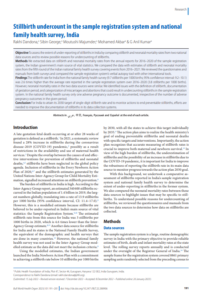
To assess the extent of under-reporting of stillbirths in India by comparing stillbirth and neonatal mortality rates from two national data sources and to review possible reasons for undercounting of stillbirths.
We extracted data on stillbirth and neonatal mortality rates from the annual reports for 2016–2020 of the sample registration system, the Indian government’s main source of vital statistics. We compared the data with estimates of stillbirth and neonatal mortality rates from the fifth round of the Indian national family health survey covering events from 2016–2021. We reviewed the questionnaires and manuals from both surveys and compared the sample registration system’s verbal autopsy tool with other international tools.
The stillbirth rate for India from the national family health survey (9.7 stillbirths per 1000 births; 95% confidence interval: 9.2–10.1) was 2.6 times higher than the average rate reported in the sample registration system over 2016–2020 (3.8 stillbirths per 1000 births). However, neonatal mortality rates in the two data sources were similar. We identified issues with the definition of stillbirth, documentation of gestation period, and categorization of miscarriages and abortions that could result in undercounting stillbirths in the sample registration system. In the national family health survey only one adverse pregnancy outcome is documented, irrespective of the number of adverse pregnancy outcomes in the given period.
For India to attain its 2030 target of single-digit stillbirth rate and to monitor actions to end preventable stillbirths, efforts are needed to improve the documentation of stillbirths in its data collection systems.